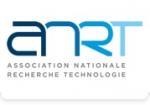Décageage dans des compartiments subcellulaires spécifiques de ligands de G4 conjugués à des peptides // Subcellular compartment-specific uncaging of peptide-conjugated G4 ligands
|
ABG-134100
ADUM-67909 |
Sujet de Thèse | |
| 30/10/2025 |
Université Paris-Saclay GS Santé et médicaments
Orsay - Ile-de-France - France
Décageage dans des compartiments subcellulaires spécifiques de ligands de G4 conjugués à des peptides // Subcellular compartment-specific uncaging of peptide-conjugated G4 ligands
- Biologie
G-quadruplexes, Ligands de G4, conjugaison avec des peptides, Décageage, Biophysique, Essais cellulaires
G-quadruplexes, G4 ligands, peptide conjugation, Uncaging, Biophysics, cell-based assays
G-quadruplexes, G4 ligands, peptide conjugation, Uncaging, Biophysics, cell-based assays
Description du sujet
Les séquences d'acides nucléiques contenant des séries répétitives de guanines ont une forte propension à s'assembler en structures G-quadruplex (G4), qui sont constituées de G-quartets empilés stabilisés par des cations monovalents. Ces structures non canoniques sont susceptibles de se former dans des régions riches en guanines dans l'ensemble du génome et du transcriptome, suggérant des rôles fonctionnels dans des processus biologiques clés. Par conséquent, ils sont devenus des objets d'études intensives. L'identification de séquences permettant la formation potentielle de structures G4, l'analyse de leur localisation dans le génome et le transcriptome et de leur formation dans les cellules sont des approches indispensables afin d'explorer plus avant les fonctions des G4 et leur importance en biologie et en médecine. En particulier, il est essentiel de développer les approches basées sur l'utilisation des ligands de G4 capables de cibler les ADN et les ARN G4 impliqués dans la régulation des gènes liés au développement du cancer. Cependant, la majorité des ligands de G4 ont tendance à se répartir dans différents compartiments subcellulaires et à produire des effets à différents niveaux de la régulation cellulaire. L'objectif de ce projet est de synthétiser des ligands de G4 conjugués à des peptides afin d'étudier leur accumulation dans des compartiments subcellulaires spécifiques, comment le noyau et le cytoplasme, pour contrôler l'origine de la réponse cellulaire. Cependant la présence du peptide peut affecter l'affinité et la sélectivité des ligands de G4, par conséquent des composés spécifiques « cagés » seront conçus : une fois que le ligand s'accumule dans le compartiment cellulaire souhaité, un stimulus (lumière ou agent réducteur) sera appliqué pour libérer le peptide. Pour suivre la distribution des ligands G4 dans les cellules avec le microscope confocal, nous utiliserons des « cages » basée sur une coumarine.
Cet objectif sera atteint par i) La conception et la synthèse des ligands de G4 conjugués à des peptides, ii) La synthèse des « cages » basée sur une coumarine ; iii) L'étude de l'interaction des nouveaux ligands de G4 aux structures G4 prototypes par des techniques biophysiques in vitro (essai G4-FID, FRET-melting) ; iv) L'étude de l'efficacité et de la cinétique de la réaction de décageage (HPLC/LC-MS) ; v) L'acquisition d'images au microscope confocal pour suivre la distribution des ligands dans les cellules ; et vi) L'étude de l'effet produit par les ligands sur les gènes associés au cancer contenant des structures G4 au niveau de la transcription (RT-qPCR) et de la traduction (Western blot). Ces expériences permettront d'amplifier les effets G4 dans des compartiments subcellulaires spécifiques et d'étudier la spécificité des composés et des réponses cellulaires associées.
------------------------------------------------------------------------------------------------------------------------------------------------------------------------
------------------------------------------------------------------------------------------------------------------------------------------------------------------------
Nucleic acid sequences containing repetitive runs of guanines have a high propensity to assemble in G-quadruplex (G4) structures, which are constituted by stacked G-quartets stabilized by monovalent cations. These non-canonical structures are likely to form in G-rich regions throughout the genome and the transcriptome, suggesting possible functional roles in key biological processes. Therefore, they have become objects of intense study. The knowledge of G4 structure location in the genome and in the transcriptome and their actual formation in cells are important aspects for further exploring G4 functions and their significance in both biology and medicine. Particularly, approaches focusing on the employment of G4 ligands able to target DNA and RNA G4s associated with cancer-related genes deserve to be thoroughly explored. However, the majority of the G4 ligands tend to distribute in different subcellular compartments and produce effects at different levels of cellular regulation. The aim of this project is to synthesize peptide-conjugated G4 ligands to address their accumulation in specific subcellular compartments, such as the nucleus and the cytoplasm, and control the origin of the cellular response. Though the presence of the peptide may affect the affinity and selectivity of the G4 ligands, therefore, caged specific compounds will be designed: once the ligand accumulates in the desired cellular compartment a stimulus (e.g. light, reducing agent) is applied to release the peptide. To follow G4 ligand distribution in cells by confocal microscopy we will use coumarin-based caging groups.
This objective will be achieved by: i) Designing and synthesizing peptide-conjugated G4 ligands, ii) Synthesizing coumarin-based caging groups; iii) Studying the binding of the newly synthesized G4 ligands towards prototype G4 structures by biophysical techniques in vitro (G4-FID assay, FRET-melting); iv) Studying the efficiency and the kinetic of the uncaging process (HPLC/LC-MS); v) Recording confocal microscope images to track ligand distribution in cells; and vi) Studying the effect produce by the ligands on cancer-associated genes containing G4 structures at the transcription (RT-qPCR) and translation (Western blot) levels. These experiments will enable amplifying the G4 effect in specific subcellular compartments and study the specificity of the compounds and the associated cellular responses.
------------------------------------------------------------------------------------------------------------------------------------------------------------------------
------------------------------------------------------------------------------------------------------------------------------------------------------------------------
Début de la thèse : 01/10/2026
Cet objectif sera atteint par i) La conception et la synthèse des ligands de G4 conjugués à des peptides, ii) La synthèse des « cages » basée sur une coumarine ; iii) L'étude de l'interaction des nouveaux ligands de G4 aux structures G4 prototypes par des techniques biophysiques in vitro (essai G4-FID, FRET-melting) ; iv) L'étude de l'efficacité et de la cinétique de la réaction de décageage (HPLC/LC-MS) ; v) L'acquisition d'images au microscope confocal pour suivre la distribution des ligands dans les cellules ; et vi) L'étude de l'effet produit par les ligands sur les gènes associés au cancer contenant des structures G4 au niveau de la transcription (RT-qPCR) et de la traduction (Western blot). Ces expériences permettront d'amplifier les effets G4 dans des compartiments subcellulaires spécifiques et d'étudier la spécificité des composés et des réponses cellulaires associées.
------------------------------------------------------------------------------------------------------------------------------------------------------------------------
------------------------------------------------------------------------------------------------------------------------------------------------------------------------
Nucleic acid sequences containing repetitive runs of guanines have a high propensity to assemble in G-quadruplex (G4) structures, which are constituted by stacked G-quartets stabilized by monovalent cations. These non-canonical structures are likely to form in G-rich regions throughout the genome and the transcriptome, suggesting possible functional roles in key biological processes. Therefore, they have become objects of intense study. The knowledge of G4 structure location in the genome and in the transcriptome and their actual formation in cells are important aspects for further exploring G4 functions and their significance in both biology and medicine. Particularly, approaches focusing on the employment of G4 ligands able to target DNA and RNA G4s associated with cancer-related genes deserve to be thoroughly explored. However, the majority of the G4 ligands tend to distribute in different subcellular compartments and produce effects at different levels of cellular regulation. The aim of this project is to synthesize peptide-conjugated G4 ligands to address their accumulation in specific subcellular compartments, such as the nucleus and the cytoplasm, and control the origin of the cellular response. Though the presence of the peptide may affect the affinity and selectivity of the G4 ligands, therefore, caged specific compounds will be designed: once the ligand accumulates in the desired cellular compartment a stimulus (e.g. light, reducing agent) is applied to release the peptide. To follow G4 ligand distribution in cells by confocal microscopy we will use coumarin-based caging groups.
This objective will be achieved by: i) Designing and synthesizing peptide-conjugated G4 ligands, ii) Synthesizing coumarin-based caging groups; iii) Studying the binding of the newly synthesized G4 ligands towards prototype G4 structures by biophysical techniques in vitro (G4-FID assay, FRET-melting); iv) Studying the efficiency and the kinetic of the uncaging process (HPLC/LC-MS); v) Recording confocal microscope images to track ligand distribution in cells; and vi) Studying the effect produce by the ligands on cancer-associated genes containing G4 structures at the transcription (RT-qPCR) and translation (Western blot) levels. These experiments will enable amplifying the G4 effect in specific subcellular compartments and study the specificity of the compounds and the associated cellular responses.
------------------------------------------------------------------------------------------------------------------------------------------------------------------------
------------------------------------------------------------------------------------------------------------------------------------------------------------------------
Début de la thèse : 01/10/2026
Nature du financement
Précisions sur le financement
Programme pour normalien ENS Paris-Saclay
Présentation établissement et labo d'accueil
Université Paris-Saclay GS Santé et médicaments
Etablissement délivrant le doctorat
Université Paris-Saclay GS Santé et médicaments
Ecole doctorale
569 Innovation thérapeutique : du fondamental à l'appliqué
Profil du candidat
Le (la) candidat(e) doit avoir une connaissance solide en chimie organique et une expérience en synthèse organique. Il (Elle) doit être motivé(e) pour s'impliquer pleinement dans un sujet multidisciplinaire mêlant la synthèse organique, les études biophysiques (spectroscopie optique), la microscopie et la biochimiques. Il (elle) devra posséder un diplôme de M2 recherche en chimie pharmaceutique, chimie organique ou un diplôme équivalent avec des connaissances en biochimie et chimie médicinale.
The candidate should have robust background in organic chemistry and experience in organic synthesis with a strong interest in chemical biology. He/she should be highly motivated to be involved in a multidisciplinary project combining organic synthesis, biophysical studies, microscopy, and biochemistry. He/she should have a master's degree in pharmaceutical sciences, organic chemistry or medicinal chemistry with know-how in biochemistry.
The candidate should have robust background in organic chemistry and experience in organic synthesis with a strong interest in chemical biology. He/she should be highly motivated to be involved in a multidisciplinary project combining organic synthesis, biophysical studies, microscopy, and biochemistry. He/she should have a master's degree in pharmaceutical sciences, organic chemistry or medicinal chemistry with know-how in biochemistry.
11/03/2026
Postuler
Fermer
Vous avez déjà un compte ?
Nouvel utilisateur ?
Besoin d'informations sur l'ABG ?
Vous souhaitez recevoir nos infolettres ?
Découvrez nos adhérents
 ASNR - Autorité de sûreté nucléaire et de radioprotection - Siège
ASNR - Autorité de sûreté nucléaire et de radioprotection - Siège  Généthon
Généthon  ADEME
ADEME  ONERA - The French Aerospace Lab
ONERA - The French Aerospace Lab  Servier
Servier  Medicen Paris Region
Medicen Paris Region  SUEZ
SUEZ  Laboratoire National de Métrologie et d'Essais - LNE
Laboratoire National de Métrologie et d'Essais - LNE  Nantes Université
Nantes Université  Tecknowmetrix
Tecknowmetrix  Aérocentre, Pôle d'excellence régional
Aérocentre, Pôle d'excellence régional  Ifremer
Ifremer  TotalEnergies
TotalEnergies  ANRT
ANRT  Nokia Bell Labs France
Nokia Bell Labs France  Groupe AFNOR - Association française de normalisation
Groupe AFNOR - Association française de normalisation  Institut Sup'biotech de Paris
Institut Sup'biotech de Paris

